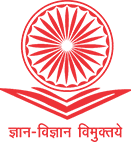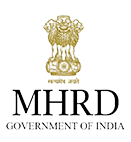Rina Dhaka
India's Iconic Fashion Designer
School of Fashion & Design








AAFT University is a leader in media and arts education for over 30 years, which offers more than 100+ professional programs in fields like Cinema, Journalism, Fashion Design, and more. The university focuses on Mastery in Media Management and Skill-Focused Excellence, providing practical training on a 27-acre campus equipped with sports facilities and hostel accommodations. AAFT University is recognized by UGC, Chhattisgarh Government, and MHRD.
Heartiest welcome to all the students joining the amazing and exhilarating world of AAFT University of Media and Arts!
I firmly believe that the students manifest their career aspirations in the most effective way possible and AAFT is at the back to ensure it happens in all its glory.
Globally, trends in professional education have witnessed unprecedented growth and momentous changes in approach. Technological breakthroughs and integration along with an inclusive inter-disciplinary framework and interactive learning have originated numerous avenues. Read More


AAFT University is approved by University Grants Commission (UGC) and is competent to award degrees as specified by UGC under section 22 of UGC Act, 1956.

With inspiring educational pedagogy and state-of-the-art infrastructure, we give students an opportunity few institutes offer.

An Act to further amend the Chhattisgarh Private Universities (Establishment and
Operation) Act, 2005 (No. 13 of 2005).

The Ministry of Human Resource Development, formerly Ministry of Education.

AAFT University is approved by The Bar Council of India (BCI) and is competent to offer law degree.

AAFT is dedicated to working toward facilitating a strong foundation for the students to embark on their professional journey. We feel honored and privileged to be associated with the leading companies across all industries.












With over 20,000 global alumni, AAFT has a strong network of individuals who have found success in a variety of industries. Among our alumni are professionals working in renowned news and media agencies, multinational corporations, film production studios, music companies, fashion design firms, public relations agencies, event management companies, and more.





School of Fashion & Design

School of Interior Design

School of Animation

School of Still Photography

School of Journalism & Mass Communication

School of Hospitality & Tourism

School of Advertising, PR & Events

School of Music

School of Fine Arts
Our Board of Directors are excellent leaders who curate and invite the top of the faculty of today’s times
throughout our intensive courses.

Sunil Shetty's discourse on acting emphasizes the importance of honesty, preparation, listening and responding, versatility, and collaboration in the craft of acting.

Akhilesh Anand's ( News Anchor) discourse on Journalism and Mass Communication brings fresh perspectives and thought-provoking insights to the field

Manjot Singh shared his insights and thoughts on the challenges and opportunities that come with being a part of the Indian film industry
Raipur is growing as an education hub of Central India, propelling opportunities to young minds like never before. It is a fascinating city with many scenic views and numerous things to do.

Students seeking admission to AAFT will have to take a mandatory AAFT Global Entrance Exam (AAFT GEE). The exam consists of an aptitude test and a personal interview (via offline or online modes) based on the aspirant’s chosen discipline. Applications to AAFT’s programs can be submitted online.
AAFT has been providing education in media, arts,and management for the past 30 years.